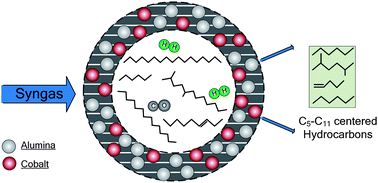Filter and buffer-pot confinement effect of hollow sphere catalyst for promoted activity and enhanced selectivity†
Abstract
To efficiently utilize the

* Corresponding authors
a
Department of Applied Chemistry, School of Engineering, University of Toyama, Gofuku 3190, Toyama, Japan
E-mail:
tsubaki@eng.u-toyama.ac.jp
Fax: +(81)-76-445-6846
Tel: +(81)-76-445-6846
b Dalian Institute of Chemical Physics, Chinese Academy of Sciences, 457 Zhongshan Road, Dalian, PR China
To efficiently utilize the

 Please wait while we load your content...
Something went wrong. Try again?
Please wait while we load your content...
Something went wrong. Try again?
J. Sun, C. Xing, H. Xu, F. Meng, Y. Yoneyama and N. Tsubaki, J. Mater. Chem. A, 2013, 1, 5670 DOI: 10.1039/C3TA10627F
To request permission to reproduce material from this article, please go to the Copyright Clearance Center request page.
If you are an author contributing to an RSC publication, you do not need to request permission provided correct acknowledgement is given.
If you are the author of this article, you do not need to request permission to reproduce figures and diagrams provided correct acknowledgement is given. If you want to reproduce the whole article in a third-party publication (excluding your thesis/dissertation for which permission is not required) please go to the Copyright Clearance Center request page.
Read more about how to correctly acknowledge RSC content.
 Fetching data from CrossRef.
Fetching data from CrossRef.
This may take some time to load.
Loading related content
